From Drew: "Re: Governer Sebelius. Governor Sebelius is the second Obama cabinet member with an HIE history, having sponsored a statewide HIE roadmap project in 2006-2007. Governor Napolitano in Arizona was the first. Both served as foundations for future HIE efforts in their states." Link 1, Link 2.
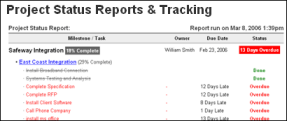
From The PACS Designer: "Re: Central Desktop. Another project collaboration tool that is low cost is CentralDesktop. It has a format that is similar to a web mashup and can be easier to use for less experienced users. CentralDesktop has received numerous recommendations on its usefulness." Link.
A reader reports that Sutter Health’s Epic implementation has changed considerably, with each affiliate submitting their own business plan and timeline as an individual capital project, making it somewhat of a voluntary standard. The reader says this was necessary because economic conditions make it impossible for Sutter to pay the $1 billion total cost. All unverified, but I will ask Inga to try to reach Jon Manis.
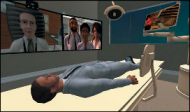
Palomar Pomerado Health opens a Second Life version of its $811 million hospital that won’t be finished for two years. The online hospital will be used for visitor previews, modeling equipment placement, and soliciting donations.
Charities are worried about President Obama’s 2010 budget, which would reduce charitable giving tax deductions for people making over $250,000. Charity Navigator says 80% of individual contributions come from the so-called wealthy. Not mentioned but surely concerned are hospitals and their foundations, already slammed by investment losses and what looks like payment cutbacks to come.

The signup page for the HIStalk reception at HIMSS, sponsored by Ingenix and Ingenix Consulting, is now open. You must RSVP to attend and we sold out early last year (fair warning). It will be Monday, April 6 from 7:00 to 9:00 PM at the Trump International Hotel, 401 N. Wabash. We’ll have food, drinks, the HISsies announcement, and maybe a speaker or two. People seemed to think it was pretty cool last year, but I’ll let you be the judge since all it takes to make me happy is a beer and a sandwich. Update: some folks say the signup form isn’t working for them, so consider it a Beta in progress.
Dartmouth-Hitchcock Medical Center’s investment portfolio has lost 25% ($100 million) of its value, but will continue with its planned EMR project.

According to this writer, new health czar Nancy-Ann DeParle has some deep financial ties to the healthcare industry she’s supposed to reform: (1) she is a managing director for an advisory firm whose affiliate converted a non-profit Idaho hospital to a for-profit; (2) as a Cerner board member, she was paid $195K in stock and cash and held around $1 million of CERN shares at the end of 2007; (3) she was on the board of Triad Hospitals and made $1.4 million on its sale; (4) she’s on the board of medical device maker Boston Scientific, paid $160K and holding $400,000 of stock at the end of 2007; (5) she’s on the board of dialysis vendor Davita, paid $194K and holding $1.8 million in shares in 2007; (6) she was on the board of specialty pharmacy vendor Accredo, now Medco; (6) she made money by selling Guidant shares when it merged with Boston Scientific; (7) she was on the board of Specialty Labs, Inc. and got 38,500 shares, which she sold. Maybe she can reform the system, but so far her talent seems to be in profiting from it. Not exactly the anti-insider that Obama said he wanted all around him.

Welcome to new HIStalk Gold Sponsor capSTS, the SNOMED Terminology Solutions division of the College of American Pathologists in Deerfield, IL. They are the terminology experts who created SNOMED CT and offer clinical informatics and terminology consulting services, mapping, and education. Information and a downloadable brochure are here. I appreciate their support.
Speaking of the not-for-profit CAP, they just released Electronic Cancer Checklists in XML format. It helps pathologists and cancer registrars collect cancer data reporting elements.
I interview Jim Bodenbender, RelayHealth VP, on HIStech Report. Pretty interesting, I think. They do a lot of cool stuff for a young company.

Two Seattle entrepreneurs have figured out how to make big money in hospitals — build them in Asia. Columbia Asia owns or runs 11 hospitals and expects to have 33 by the end of next year. A Seattle developer who says US hospital regulations are "Luddite" summarizes nicely: "They’re going to be coining money. I think it’s a cash cow and a wonderful thing for a U.S. company to do, to bring our health care to the rest of the world. Health care is an exportable business, and Baty’s got it figured out." The company’s hospitals average 90 beds and focus on short, non-critical stays by young, middle income patients. They use EMRs and centralized accounting systems.
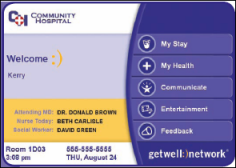
Interactive patient care systems vendor GetWellNetwork gets $10 million in Series C funding as well as eight new customer sites.
"Few vendors have delivered an integrated, full-featured RIS/PACS." So sayeth KLAS.
Health Information Trust Alliance releases its common security framework. If you’re a security expert, chime on in.
Chuck Christian, CIO at Good Samaritan Hospital (IN), is featured in an article about his 247-bed hospital’s implementation of Imprivata’s single sign-on. This quote sounds like Chuck: "I basically tell them Big Brother lives and breathes at Good Samaritan Hospital and he is standing right in front of them. I explain that I have audit trails on every one of the systems and I can tell what they looked at, how long they looked at it, and from where they looked at it. The last person they want to see walk in their director’s office is me with the audit logs, because they next person they’re going to see are the folks in HR as they are being processed out of the building."

Cerner isn’t the only software vendor with a Vision Center. Patient Placement Systems opens its version in Alpharetta to showcase its Web-based referrals management system.
A California guy writes software that matches lists of kidney donors and recipients, sorting through millions of combinations (up to six-way) to generate the largest number of transplants possible from the pool. It was claimed to have saved two patients in 2007, 20 in 2008 ,and the goal is 200 in 2009.

A bizarre and gory hospital-themed restaurant called Hospitalis opens in Latvia, featuring dining on gurneys using syringes and scissors for silverware. Not nearly as scary as eating in a real US hospital’s cafeteria, I’d say.
E-mail me.
HERtalk by Inga
From Vince: “Re: MS IV. You got Siemens MedSeries IV a bit wrong: it’s not COBOL, it is written in RPG, on IBM’s OS/400 operating system, and running on iSeries (the old AS/400 minicomputer line with a new name). It was originally written by IHC (Intermountain Health Care) back in the 80s for their chain of hospitals, was sold to GTE, who then sold it to SMS in the 90s. I agree that its roots are old, but give Siemens credit for a bunch of R&D that has given the old RPG some neat Java front-end stuff they call ‘WebConnect’. Although I am no fan of any vendor (they all charge too much and deliver too little – it’s called ‘profit margin’), MS IV is pretty reasonably priced and competes well in the small to mid-size (100- to 300-bed) hospital market.” Thanks, Vince, I stand corrected. I am blaming my COBOL mis-statement on an expert friend of mine who shared his opinions with me, then claims he forgot it was RPG. Still sounds “old and lipsticked”.
If you are looking for new medical office space, you may want to take advantage of the renters/buyers market. An increase in newly built space, coupled with the weaker economy, is providing an opportunity for providers to negotiate lower rates on current leases or rent/buy space at attractive prices.
A new Thomson Reuters analysis presents a pretty dismal picture for the financial well-being of the nations’ hospitals. Based on a study of 400 hospitals, the report finds that half of the hospitals are unprofitable and the median total margin in Q4 was zero percent. Cash on hand also hit historic lows, with a median value of 110 days.
The hometown paper of Initiate Systems highlights how the company and its software are well positioned to take advantage of Obama’s plan for interoperable electronic health records.
With consumers responsible for a higher percentage of their medical costs and with more providers requiring deductible and co-pay payment of up front, a consultant predicts more banks will offer interest-free healthcare credit cards. The cards might be linked to payrolls for deductions and even offer discounts for users. But will it offer frequent buyer points like Nordstrom’s so you can save up for some free plastic surgery?
A Press Ganey survey of 2.4 million patients indicates that patient satisfaction is on the rise. The report concludes that increased competition and consumer empowerment are spurring improvements. Patients claim their top priorities are the sensitivity of caregivers, the cheerfulness of the practice, the overall care received, and the comfort of exam rooms. The survey also found that patients will tolerate some waiting, but delays over 10 minutes decrease satisfaction. Practices with 3-8 physicians earned the highest overall patient satisfaction scores.
HealthPoint Rehab (MO) implements Chart Links therapy documentation and scheduling system. HealthPoint Rehab is a 26-therapist, two-location practice associated with Southeast Missouri Hospital.
Picis introduces its new Insight ED Charge Rules and LYNX E/Point products. The solutions are designed to improve workflow and hospital charging for IV and injection services in the ED.
Partners Healthcare (MA) selects Compuware Vantage to optimize its end-to-end EMR system performance.
Southern Arizona HIE chooses Wellogic as its technical partner, along with Apollo Health Street and Initiate Systems.

Wheeling Hospital (WV) agrees to implement Eclipsys’ Sunrise Enterprise suite across its two hospitals, two clinics, and four outpatient centers.
Virginia Mason Medical Center (WA) selects Enterprise Vision, Versus Technology’s hybrid infrared and RFID RTLS for its new primary care clinic.
InfoLogix subsidiary Healthcare Informatics Associates hires Richard C. Howe as VP of business development and appoints Shirley Hughes as VP of Healthcare Consulting. Rowe is a former HIMSS president and VP at First Consulting Group and MedPlus. Hughes is a five-year veteran of HIA and has worked at several other vendors over the past three decades.
The Georgia Cancer Coalition selects Medicity to power its statewide HIE to share evidence-based medicine with community cancer care centers.
The VHA chooses Thomson Reuters as its preferred vendor for clinical quality improvement solutions.
Fletcher Allen Health Care (VT) is counting down the days until it goes live on Epic as part of its $57 million automation project. When complete, the system will connect every function at the hospital and provide prescription information for almost half the physicians in the state.
Finally, I just want to know if it was a man or a woman who created this product.
E-mail Inga.
An HIT Moment With … Marv Addink

An HIT Moment with ... is a quick interview with someone we find interesting. Marv Addink is the new Chief Innovative Officer for EDCO Group Inc., which announced Monday its merger with SolCom, Inc., of which he was previously CEO.
What were the respective strengths of the two companies and what benefits will the merger offer to customers and prospects?
The strengths are leadership and innovative technology. EDCO brings leadership by being the largest document management services company in North America, specializing in healthcare. SolCom brings to the table a proven EDMS and innovative capture technology.
The merger allows SolCom’s capture technology to reach more hospitals as a cost-saving alternative to traditional scanning.
What is the role of electronic document management in the quest for EHRs?
An electronic document management system is only as good as its document imaging capabilities. While an EDMS is instrumental in managing electronic records, getting the records to an electronic format becomes a vital part of an EMR initiative.
Can a "paperless" operation be achieved with existing information systems when paired with a document management system?
Yes, an electronic document management system (EDMS) aids a paperless initiative by electronically managing documents from multiple systems so they don’t have to be printed out and shuffled between departments.
But until documents become part of the hospital-wide repository, paper still exists and is relied upon for patient care. For example, we see many hospitals that only have the resources to scan records after discharge. This means that inpatient care continues to rely on paper and the EDMS simply becomes a history repository. Until all records — inpatient, outpatient and ED — are scanned on-demand, a paperless goal is not feasible.
SolCom, now a division of EDCO, addresses this dilemma with scanning technology and on-site scanning services that turn around scanned documents within 24 hours.
What are some examples of high ROI or high patient benefit projects customers have implemented using your technology?
On-demand scanning is vital to a paperless EMR, but it requires significant technical, capital, and time resources throughout the capture process. HIM departments that can manage to keep up are doing it on an average of 18 to 22 cents per page.
EDCO provides an alternative capture process that can cut those costs in half.
Will the positioning of the products and services change as a result of both the merger and the economic challenges hospitals are facing?
SolCom’s technology, now coined “Solarity,” had only recently entered the healthcare market. With EDCO’s resources, this patent-pending process will be positioned not only for hospitals, but clinics as well. In economic challenges, the savings potential of Solarity becomes even more appealing to HIM Directors and CFOs.



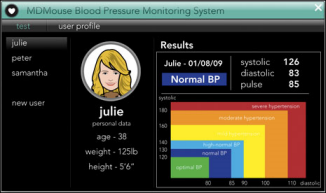





























 It must be something wrong with us…
It must be something wrong with us…





















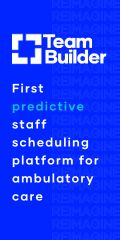


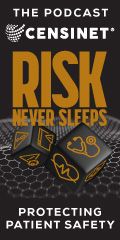











































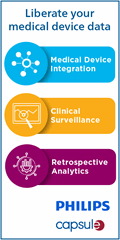



























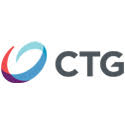



The primary point of using the Cloud is using operating expenses vs limited capital ones and avoiding having to update…